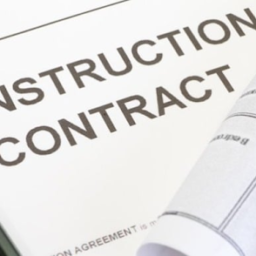Perfect Your RFI
Unless you have a crystal ball, anticipating a project in its entirety from its conception, through design and estimation to project delivery is next to impossible. Even if you have accounted for the whole scope of work involved in the project, variables will inevitably alter during the planning, estimating, bidding, and construction phases, causing your plans to shift for better or for worse.
Subcontractors, suppliers, estimators, contractors and project managers all play a role in delivering a construction project, not just the guys onsite. Many elements go into an inherently complicated and somewhat unpredictable process (by unpredictable I mean anything from the weather, material shortages to economic downturns!)
Everyone must be in sync for the tender to be estimated effectively and on time. Clients and designers and / or estimators involved must be on the same page to produce a sound estimate.
Communication, therefore, is critical.
And that is where RFI or request for information, becomes useful. They help to keep insulation estimating or M+E estimating tenders on schedule and critically, as accurate as possible.
The tips for RFI listed here are equally applicable to all aspects of construction like insulation estimating, design-build, Mechanical and electrical estimating and all other trades too.
What is an RFI? Perfect Your RFI

They are used to collect information that isn’t available in the tender documents, drawings, or specifications. Therefore, they are an essential part of the estimation process.
A practical example of this is where an insulation estimator comes up against an incomplete design in say a plant room yet the insulation contractor is still expected to price this into his contract value, thus perhaps a ‘steer’ is needed from the mechanical contractor to give some indication on what to price in the form of pipe sizes for instance.
RFI in case of design and build projects are enquiries for important information but from the designers and engineering specialists.
Design RFI’s are incredibly important to ensure that mechanical and electrical systems are designed to withstand the loads placed on them which will be expected from the occupants of the building eventually throughout their lifespan along with the most economical and efficient routes are planned and also so they do not clash with other trades.
So, in a nutshell, an RFI is a written communication used to acquire extra information over the course of a tender or design.
It is extremely advisable that all RFI is done via email or other written communication to fall back on in the future. Verbal RFI confirmations should be backed in writing by yourself or your client so you can refer to them in future in case of a dispute.
How RFIs are used?
RFI can be issued in any situation that warrants further information or clarification by your estimators or designers. Estimators can and should use RFI’s where they are unsure about something rather than ‘guesstimating’.
You and your project managers will thank your estimators for ensuring that you as a company have accounted for everything at tender stage and the best way to do this is through RFI’s
In the case of design and build projects, RFIs are typically issued all through material selection or design development process, and they are used to clarify the following:
- Specifications and guidelines for construction
- Management of materials
- Contractual obligations
- Building design drawings
- Plan for construction management
- Existing Conditions
RFIs should not be confused with the following similar acronyms, such as:
- Request for Proposal (RFP)
- Request for Tender (RFT)
- Request for Quotation (RFQ)
Perfect Your RFI, Why are they Important?
The following are some of the advantages of utilising an RFI in estimating-
- RFIs can help you set up and streamline your entire communication process with the client and other stakeholders involved.
- Internal communication between your insulation estimating team, for example, also speeds up with RFIs because all necessary information about the project is available.
- RFIs can assist in organising paperwork.
- Show to your client that you ‘understand’ the project, have a keen eye for detail and will leave them feeling confident that you will not come back to them with your hand out asking for variations on extras that were missed at tender stage
How to draft the perfect RFI Process
In estimating, RFIs can be utilised to improve communication and speed up decision-making in many ways. Here’s 10 tips to help improve your use of RFI’s.
- Make your statement as specific and as short as possible – lead with a question
Anyone writing an RFI should be as specific as possible in their request. It’s preferable to start an RFI with a question that is directed towards a client or contractor.
RFIs should be clear, specific and leave little room for ambiguity as they may be passed through to many people involved in the project.
Don’t expect a client or subcontractor to grasp what you need from them. Use a question mark and be direct. Most importantly is to keep it short and simple. Clients do not want to have read a short essay for each point. Get to the point and think of the KISS acronym. Keep it simple stupid!
- Presumption is the mother of all…….
It’s better to ask for information at tender stage for free than to have your fingers burnt on the project during delivery, which will probably definitely not be free to you at least. Estimating errors are usually costly, there’s no getting around it. Estimators and designers need to understand this.
This may add pressure on you or your estimators but using RFIs for communication helps reduce the likelihood of such errors to a bare minimum. You must stop presuming or burying your head in the sand and start asking! Everyone will feel a lot more comfortable with your bid the more confident you are with it.
- Always be considerate.
It is important to be considerate while writing an RFI. The person who receives your RFI may not be able to comprehend the information in the same way that you would share it with a coworker on the job. It is a must to maintain a professional tone throughout the process.
- Back up your RFI with visuals
Anyone looking into the RFI may be unable to recall every detail of a project. So, it’s good to incorporate visuals to demonstrate the issue or support your inquiry with drawings, images, sketches, screenshots or even videos in your RFI.
It will assist the reader in comprehending the question and result in a quicker response. You can use tools such as Loom to record your screen quick and easy and send the links to clients for this.
- Suggest a solution
A majority of people value proactivity. If you want to build a good relationship with your contractors or clients, try to suggest solutions each time you send them an RFI.
An RFI could include your thoughts on the subject. Making a recommendation right away can assist speed up the process and get you a quicker response. People always prefer suppliers who come to them with solutions, not just problems.
- Allow time to respond.
People despise being rushed, so they are less likely to respond when they see the word “urgent” printed on every page.
Depending on what the RFI is about, the time it takes for the reader to react can vary. If this is a time-sensitive RFI, make sure you give a deadline ahead of time.
- Be cautious when naming the various RFIs.
It becomes much easier for estimators to find RFIs when they need to be referred to in the future if they use a certain approach for identifying them. You can organise all the RFIs relating to a project using appropriate software.
- Frame the question in a yes or no format whenever possible
Time is a valuable commodity. Respect your clients time by giving the ability to write just YES or NO after a question. This way not only will you get your RFI back faster but you will have saved your client some time. If you make your client work to give you an answer, don’t expect it back fast or even at all in this day and age where time is at a premium.
- Don’t send 1 RFI per email. Batch them together where possible
Don’t be that irritating estimator / designer who bombards your clients with emails, each one asking a different single point. You need to batch your RFI’s together in as little emails as possible allowing your client to answer as many as they can in one go.
Obviously as you work your way through the project you may come across more, so its not expected that you would send them ALL in one go which leads me onto my last point
- Dont send an avalanche of RFI
Don’t wait until you’ve compiled a behemoth of an RFI list with 100 + RFI to drop in your clients email box like the one that was dropped on Hiroshima, crashing their computer in the process. You want to strike that balance between not pestering your clients with too many RFI emails and giving them one that is too daunting to work through. Break them up into manageable chunks over the course of estimating the tender. 2 or 3 RFI’s lists is a nice number to try and stay within but obviously this could be more or less depending on the size, complexity and detail given for the project.
If you want to take advantage of exceptional pricing from a prominent UK estimating software supplier, you can use our software to estimate projects yourself. To learn more, please visit this page.
Perfect Your RFI, Final Thoughts
Every estimator should aim to ask as few RFIs as possible without compromising their tender with shaky assumptions. Implementing effective strategies and streamlining the process can reduce the amount of time and effort required on RFIs, not only for you but for your clients. It can lead to fewer disputes, quicker turnaround on tenders and onsite and ultimately a successfully delivered project for you and your clients.
At Chase estimating, we have streamlined our processes so that our RFI’s are short, concise and to the point. We believe in RFI’s as one of the cornerstones of an accurate tender.. Our team of diligent estimators have a keen eye for detail that helps us provide unrivalled accuracy when it comes to Mechanical, Electrical or insulation estimation. Check out our website at www.chaseestimating.com
Email us your request to enquiries@chaseestimating.com or call us at 01630 417161and we would be glad to help you with your insulation estimating or or Mechanical or Electrical estimating requirements.

















